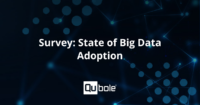
Technology is transforming the banking and finance industry. Thanks to the Internet and the proliferation of mobile devices and apps, today’s financial institutions face mounting competition, changing client demands, and the need for strict control and risk management in a highly dynamic market.
Business Intelligence
At the same time, technology has given rise to powerful business intelligence tools. Tools that the banking and finance industry can use to leverage customer data for insights that can lead to smarter management practices and better business decisions. To that end, here’s a look at some of the ways banking and finance institutions are using Business Intelligence (BI) solutions to drive profitability, reduce risk, and create competitive advantage.
Improved Operational Efficiencies: In today’s ultra-competitive marketplace financial institutions need to be as lean and efficient as possible. Using BI solutions to analyze operational processes, organizations can reduce ongoing costs and maximize existing resources and expertise. For example, by analyzing the performance of customer-facing employees, such as sales personnel, tellers, and account managers, organizations can discover ways to improve and enhance the customer experience at the point of contact.
Business Intelligence in Finance
Improved Products and Services: BI solutions allow organizations to track individual revenue streams to better determine which products and services are profitable and which are not. But the benefits don’t stop there.
Self-Service Analytics
Business Intelligence solutions also enable financial organizations to analyze vast amounts of customer data to gain insights about customer needs and sentiments regarding banking that can be used to improve products and services. As an example, perhaps it is learned that customers want a quicker, easier way to track and analyze their earning and spending patterns. Institutions may be able to send more timely alerts to customers. Or they are looking for a smoother and less complicated application and funding process. Armed with these kinds of insights, organizations can develop new and improved financial products and services to better meet customer needs, and in turn, create a competitive edge.
Improved Marketing: Using BI, marketers can analyze CRM data based on a range of criteria to uncover the most profitable customer profile. In addition, the customer base can be analyzed to identify and develop new cross-sell and up-sell opportunities and to carry out more targeted online marketing campaigns. This presents a major advantage, as research shows that it costs five times more to sell financial products and services to new customers than to existing customers.
Improved Customer Retention: As previously discussed, BI applications can help financial institutions identify and pursue those customers that are the most profitable. BI also plays an important role in improving customer retention and loyalty. Using business analytics tools and techniques, organizations can discover the reasons why customers switch to competing institutions. They can then implement new processes to help reduce customer churn. The ability to track customer habits, preferences, and behaviors also allows organizations to tailor their products and services in ways that meet needs, solve problems, and promote customer retention and loyalty.
Becoming a Data-Driven Enterprise
Developing New Investment Strategies: Asset managers are utilizing new data sets to develop new strategies for investing. By developing models around social media, investors can gain specific insight on sentiment and develop trading signals. Other research analysts are using satellite imagery to understand the global supply of commodities like oil & gas or triangulating consumer spend based on the number of cars in shopping center parking lots. Whole new categories of investing are emerging from leveraging analytics and BI applications.
Risk Reduction: The financial world is constantly changing and filled with uncertainty. More than ever, banking and finance institutions need to use every tool at their disposal to reduce risk. Fortunately, today’s Business Intelligence solutions provide actionable information that organizations can use to mitigate risk in a number of areas.
The ability to track customer transaction histories allows institutions to quickly detect and reduce incidents of fraudulent activities, the most notable being credit card fraud. The ability to track the communications and behavior of internal employees in trading securities helps institutions comply with new regulation frameworks brought on by the 2008 financial crisis and recent insider trading cases. Unlocking data from siloed asset class systems could help global banks predict credit risk for counterparties across all asset classes.
Accurately estimating the risk of customer loans based on key criteria such as the borrower’s earning capacity and current financial assets—while factoring in new data sets and the prevailing economic climate—is another risk mitigation benefit that BI can provide. BI tools can also be used to analyze credit portfolios, detect potential delinquency cases early, and take quick preventative action.
Technology is transforming the banking and finance industry, and it’s not done yet. Going forward, those institutions that adopt and fully utilize BI solutions to manage risk, increase operational efficiency, and provide products and services that meet real customer needs will be better positioned to enjoy sustained growth, profitability, and a competitive edge for years to come.



